On 29-01-13 I visited the Phnom Pel burial site in the lower Cardamom Mountains.
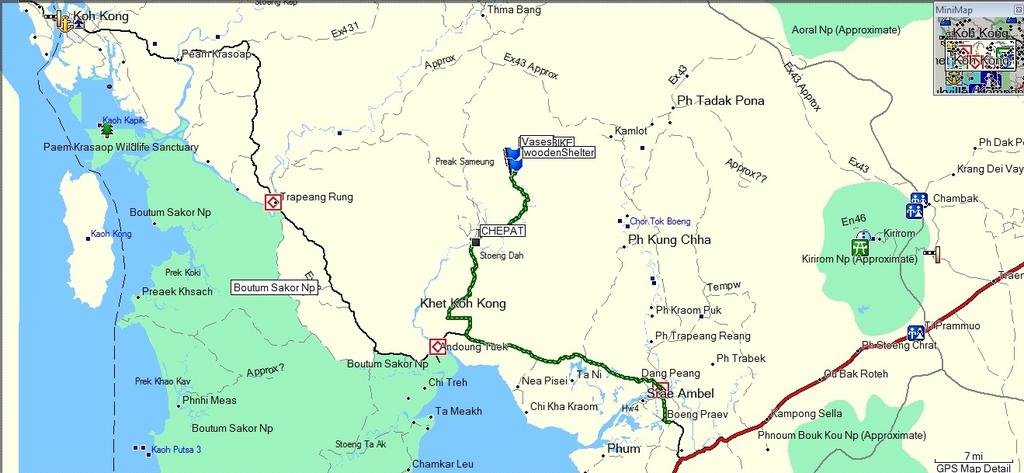
Zeman who runs Home - Cambodia Expeditions put me onto this site.
Coming from Sre Ambel, and heading towards Koh Kong , turn right on a good laterite road several km’s before the 2[SUP]nd[/SUP] river bridge. From there its ~27km to Chiphat (spelt Chepat on my map.). You need to cross a river on a small motorbike ferry at Chiphat.
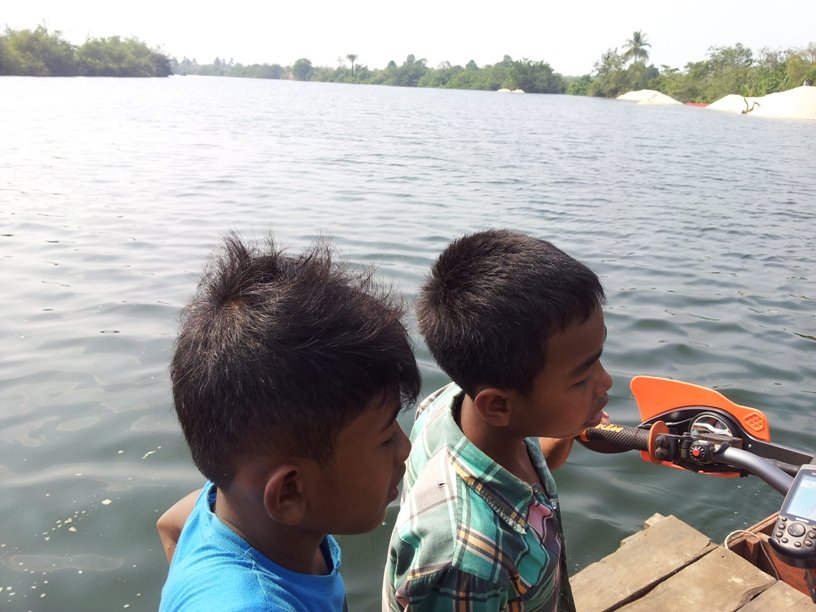
Chiphat has several basic guesthouses. Fuel (in bottles), and food etc is available at several places.
Following pic is of the most well stocked and cleanest store. Its right next to the ferry crossing on the Chiphat side.
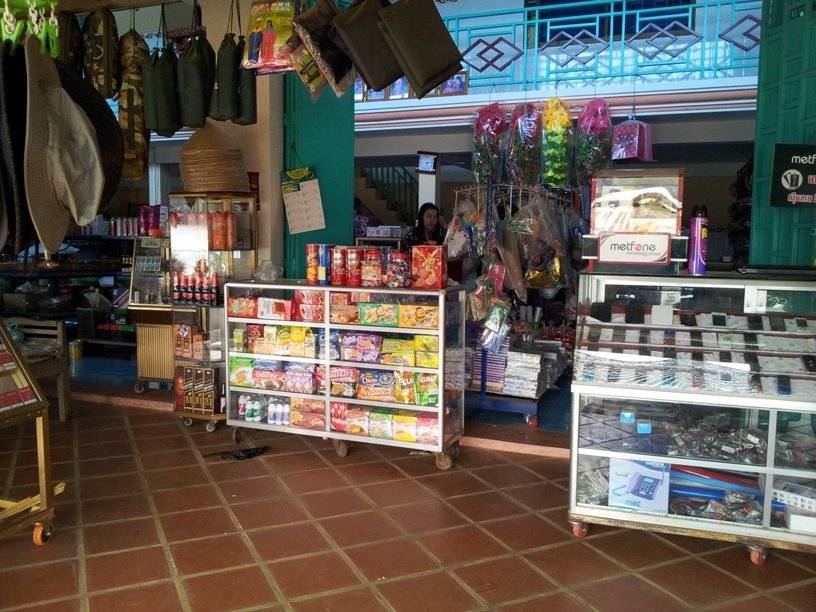
The trail from Chiphat to the burial site is around 22km
Its a combination of two track and single track with several shallow creek crossings and a river crossing which is also shallow this time of year.
Some parts of the trail are flanked by minor cultivation which opens it up a bit.
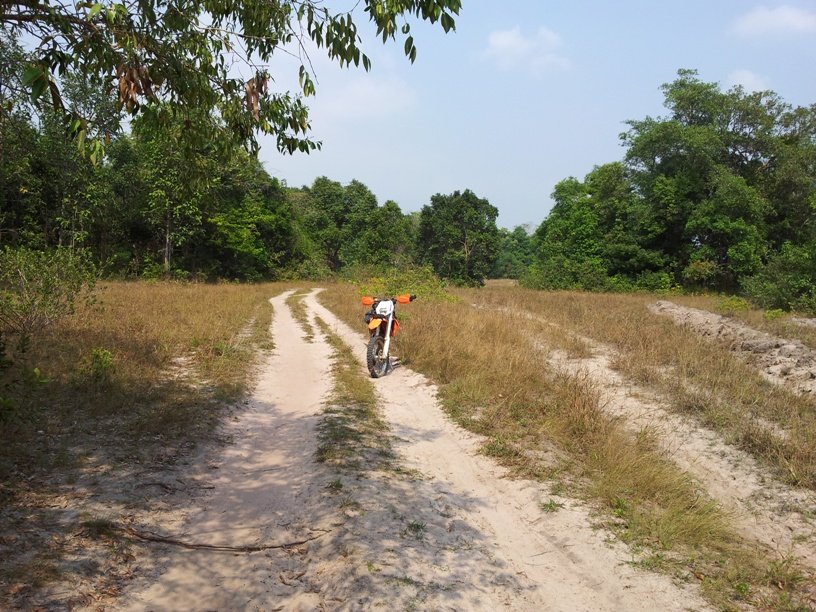
Other parts are surrounded by bamboo and regrowth forest.
Bike parked at base of hill to burial site
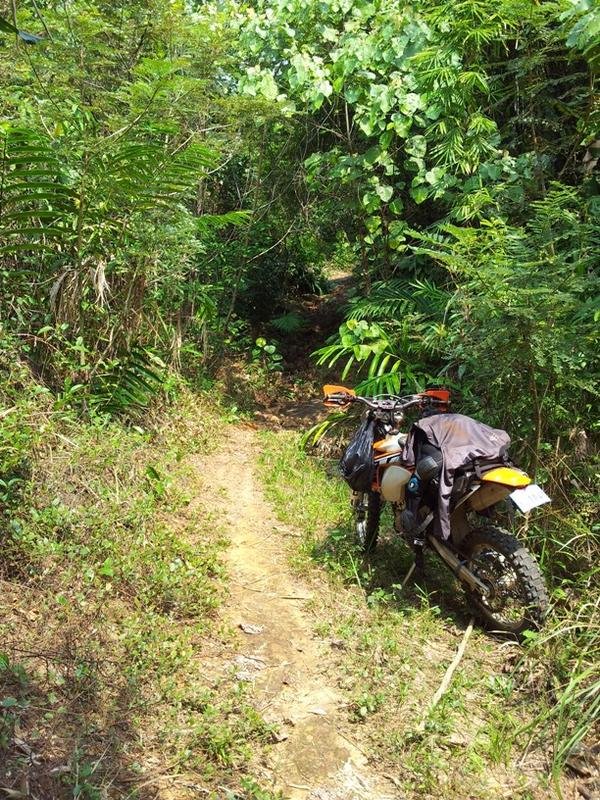
Close to the burial site are some shelters, presumably constructed for the visiting scientists ?
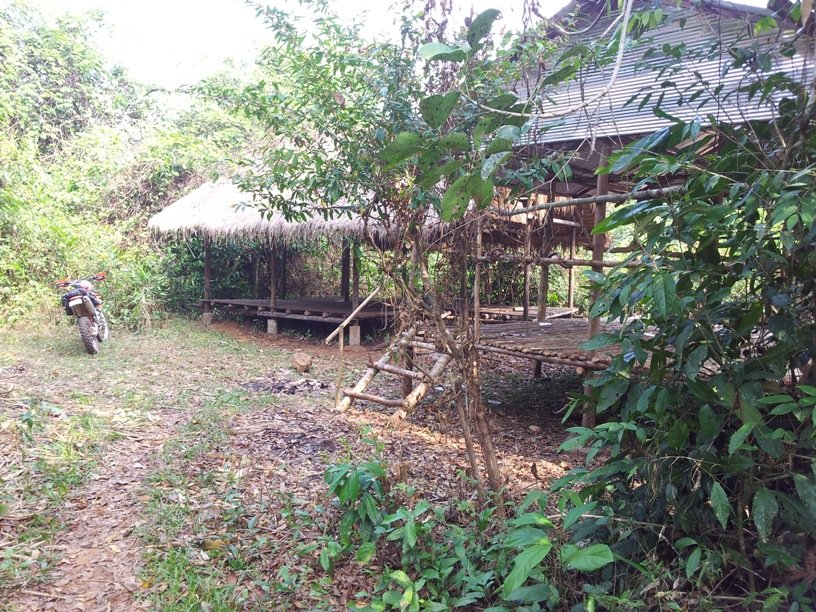
Here’s some background info on the scientific studies
Overview article
Detailed Report
http://academiccommons.columbia.edu...wnload/ac:149373/CONTENT/15828-18854-1-PB.pdf
To view the Phnom Pel burial site entails a ~200m ish hike up the side of a hill to access the rock ledges housing the jars and coffins. There’s two ladders that access the ledge with the jars
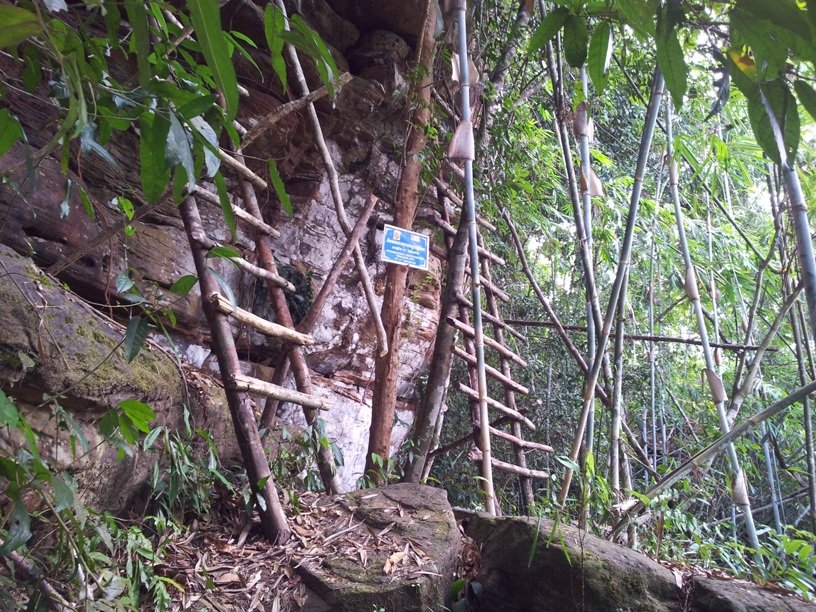
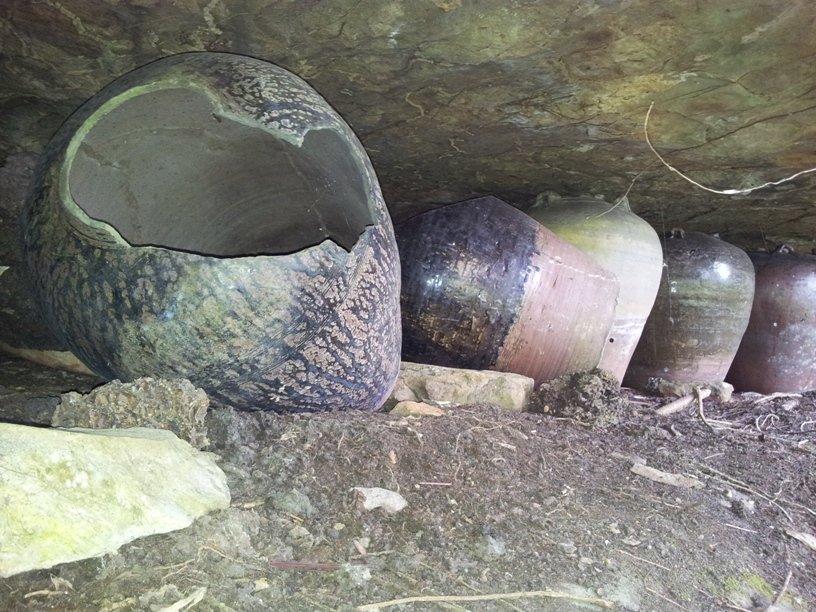
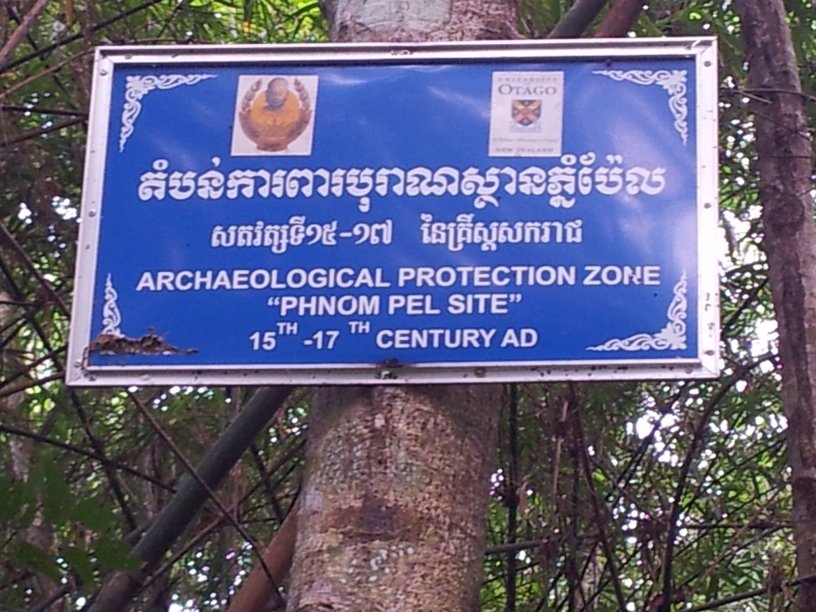
About 20-30 meters from the jars is another rock ledge with the coffins.
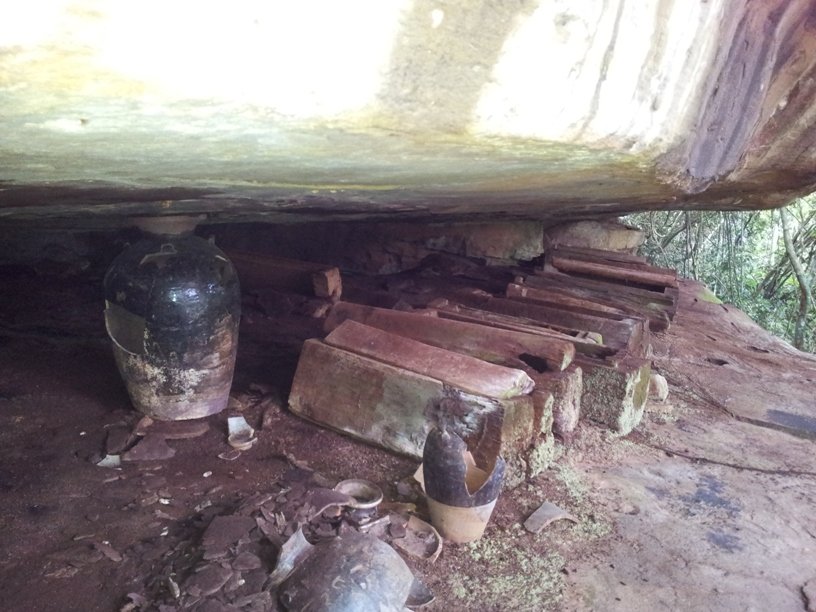
Chiphat commune is gradually being developed for ecotourism, or thats the plan. I doubt many mainstream tourists ever go there. It was nice to see a total lack of rubbish on the trail to and at the burial site.
The town also accesses the smugglers trail going towards Koh Kong if you want to add a more challenging offroad ride to the itinerary
I visited the Phnom Pel site as a day trip from Sihanoukville, 350 km round trip. However if you stay in Chiphat, then its just a cruisey ½ day excursion.
Edit
In Oct 2013 I was contacted by Nancy Beavan after she came across my ride report. Nancy is the lead scientist for the archaeological research on the Jar and Coffin burial sites.
She asked me to point out a couple of things with visiting the site and I paraphrase
:Lids are kept on all the coffins to protect the bone and especially so that the contents are not tampered with so that we can go back for future study. If the site has been tampered with, any further study of the skeletal remains is, essentially, screwed, because we can never know if a bone was removed, or someone tidied up and tossed an extra bone in, etc.
PLEASE suggest that they use a Chi Phat guide from the ecotourism programme. Its not going to cost the earth to pay one of these locals, its a pay-it-forward contribution to the local economy, but most importantly, it will protect the site. These are the most extraordinarily valuable cultural heritage sites as they are they only evidence for a highland people who lived in the cardamoms and had a culture absolutely removed from the Angkorian kingdom.

Zeman who runs Home - Cambodia Expeditions put me onto this site.
Coming from Sre Ambel, and heading towards Koh Kong , turn right on a good laterite road several km’s before the 2[SUP]nd[/SUP] river bridge. From there its ~27km to Chiphat (spelt Chepat on my map.). You need to cross a river on a small motorbike ferry at Chiphat.

Chiphat has several basic guesthouses. Fuel (in bottles), and food etc is available at several places.
Following pic is of the most well stocked and cleanest store. Its right next to the ferry crossing on the Chiphat side.

The trail from Chiphat to the burial site is around 22km
Its a combination of two track and single track with several shallow creek crossings and a river crossing which is also shallow this time of year.
Some parts of the trail are flanked by minor cultivation which opens it up a bit.

Other parts are surrounded by bamboo and regrowth forest.
Bike parked at base of hill to burial site

Close to the burial site are some shelters, presumably constructed for the visiting scientists ?

Here’s some background info on the scientific studies
Overview article
Pictures: "Body Jars," Cliff Coffins Are Clues to Unknown TribePerched in some cases on precarious cliff ledges, centuries-old log coffins—such as this one, pictured alongside researcher Nancy Beavan—and "body jars" are the only known traces of an unknown Cambodian tribe. Now new dating studies are beginning to assure the unnamed culture a place in history.
Detailed Report
http://academiccommons.columbia.edu...wnload/ac:149373/CONTENT/15828-18854-1-PB.pdf
To view the Phnom Pel burial site entails a ~200m ish hike up the side of a hill to access the rock ledges housing the jars and coffins. There’s two ladders that access the ledge with the jars



About 20-30 meters from the jars is another rock ledge with the coffins.

Chiphat commune is gradually being developed for ecotourism, or thats the plan. I doubt many mainstream tourists ever go there. It was nice to see a total lack of rubbish on the trail to and at the burial site.
The town also accesses the smugglers trail going towards Koh Kong if you want to add a more challenging offroad ride to the itinerary
I visited the Phnom Pel site as a day trip from Sihanoukville, 350 km round trip. However if you stay in Chiphat, then its just a cruisey ½ day excursion.
Edit
In Oct 2013 I was contacted by Nancy Beavan after she came across my ride report. Nancy is the lead scientist for the archaeological research on the Jar and Coffin burial sites.
She asked me to point out a couple of things with visiting the site and I paraphrase
:Lids are kept on all the coffins to protect the bone and especially so that the contents are not tampered with so that we can go back for future study. If the site has been tampered with, any further study of the skeletal remains is, essentially, screwed, because we can never know if a bone was removed, or someone tidied up and tossed an extra bone in, etc.
PLEASE suggest that they use a Chi Phat guide from the ecotourism programme. Its not going to cost the earth to pay one of these locals, its a pay-it-forward contribution to the local economy, but most importantly, it will protect the site. These are the most extraordinarily valuable cultural heritage sites as they are they only evidence for a highland people who lived in the cardamoms and had a culture absolutely removed from the Angkorian kingdom.
Last edited:

